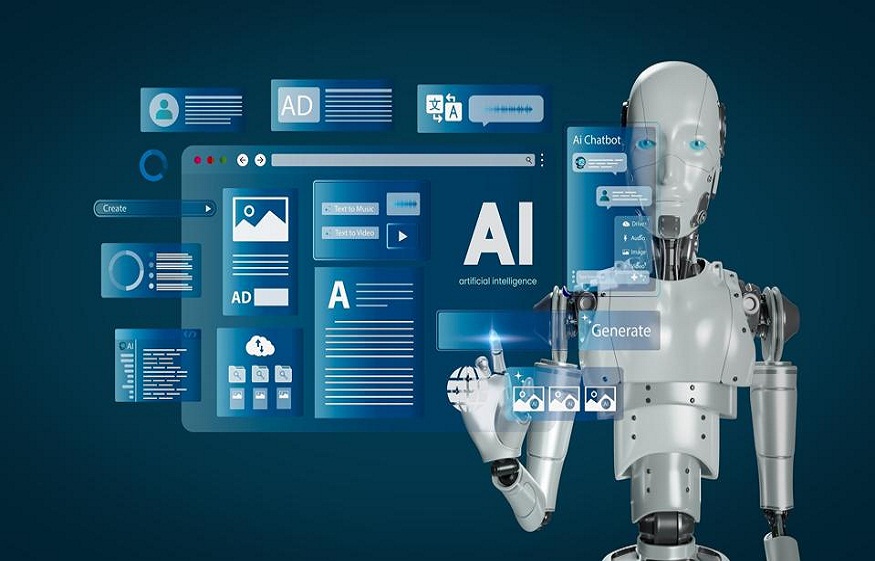Agentic AI isn’t just the latest trend — it’s a fundamental shift in how software works. Unlike single-task automation or static bots, agentic systems are autonomous, goal-oriented, and capable of orchestrating complex workflows. At the heart of this evolution lies a powerful technical idea: multi-LLM orchestration.
By combining multiple large language models (LLMs), agentic systems achieve higher accuracy, resilience, and context awareness than any single model can provide.
In this blog, we’ll explore the technical foundations of agentic AI, why multi-LLM strategies matter, and how they enable better outcomes in real-world environments.
What Is Agentic AI?
Agentic AI refers to intelligent systems built from autonomous software agents — digital entities that don’t just respond to commands, but act with intent. These agents are capable of:
- Interpreting goals rather than just executing instructions
- Making context-aware decisions in real time
- Taking multi-step, multi-tool actions without supervision
- Learning from outcomes to improve future performance
- Collaborating with humans and other agents to achieve shared objectives
Unlike traditional automation tools that follow rigid, rule-based flows, agentic AI systems are adaptive, proactive, and resilient. They’re designed to operate in dynamic environments, continuously adjusting their behavior as new information or challenges arise.
Think of an agentic system as an AI employee. You don’t micromanage it — you assign it a goal (e.g., “process this month’s compliance reports” or “resolve low-priority support tickets”). The system then:
- Plans the steps
- Gathers necessary context
- Uses different tools or APIs
- Decides when to escalate
- Documents its reasoning and results
This kind of autonomy makes agentic AI ideal for handling real-world complexity — from operations and support to analysis and compliance. These systems don’t just reduce human workload; they expand organizational capacity, working around the clock to solve problems previously considered too unstructured for automation.
In short, agentic AI marks the evolution from AI assistants to AI collaborators — systems you can trust to drive outcomes, not just follow rules.
Limitations of Single-Model Systems
Large Language Models (LLMs) like GPT-4, Claude, and Gemini are incredibly capable — but even the most advanced models come with inherent limitations. No single model is optimized for every task, and relying on just one introduces challenges that can degrade reliability and performance at scale.
Here’s where single-model systems fall short:
- Narrow Strengths, Uneven Performance:
Some models are exceptional at logical reasoning (e.g., multi-step problem solving or code analysis), while others are optimized for language fluency or speed. Few are great at everything — and none can consistently perform across knowledge retrieval, reasoning, real-time data handling, and compliance-aware decision-making all at once. - Knowledge Gaps and Latency:
Many LLMs have a knowledge cut-off, meaning they don’t have access to the latest events or regulations unless explicitly integrated with external tools or APIs. This is a significant limitation for compliance-heavy or rapidly evolving domains like finance, healthcare, or cybersecurity. - Prompt Fragility:
Most LLMs are highly sensitive to how prompts are phrased. A slight variation in structure can produce drastically different outputs — a challenge known as prompt brittleness. In production environments, especially where decisions must be repeatable and auditable, this kind of unpredictability is unacceptable. - Limited Memory and Context Windows:
While context window sizes are improving, individual models still struggle to process very long documents, multi-turn interactions, or historical memory without losing track of important details. This impairs their ability to manage end-to-end workflows or operate reliably over time. - Single Point of Failure:
When an entire AI pipeline depends on one model, that model becomes a bottleneck and liability. If it fails — whether due to latency, inaccuracy, or misunderstanding — the entire workflow stalls or breaks. This is especially risky in regulated or high-stakes environments where errors carry legal or financial consequences.
In short, single-model AI systems are like hiring a genius who can do one thing brilliantly — but struggles when asked to wear multiple hats, adapt on the fly, or explain their decisions clearly. That’s why forward-thinking companies are moving toward multi-model, agentic systems that combine the best of each model and route tasks dynamically based on context, capability, and confidence.
Why Multi-LLM Architecture Matters
Agentic AI systems like Ema AI overcome these limitations by using multi-LLM orchestration, a framework where multiple models are:
- Dynamically selected based on the task
- Specialized for certain domains (e.g., compliance, customer service, data analysis)
- Cross-validated for output reliability
- Layered in a pipeline for planning, execution, and monitoring
This enables task-level optimization — using the right tool for the right job — and enhances robustness in uncertain or complex workflows.
Core Components of a Multi-LLM Agentic System
Let’s break down the technical layers that make this work:
1. Task Router or LLM Orchestrator
This component identifies the nature of a request and dynamically routes it to the most suitable LLM. For instance:
- Legal query → Claude
- Math-heavy prompt → GPT-4 Turbo
- Coding request → Gemini Pro
2. Skill-Specific Agents
Each agent is fine-tuned or prompt-engineered for a specific function. Examples:
- A compliance agent trained on HIPAA/GDPR rules
- A data analyst agent for ETL and reporting
- A customer service agent trained on tone, escalation protocols, and SLAs
3. Generative Workflow Engine™
A proprietary layer (like in Ema AI) that chains agent actions into complete workflows — including conditional logic, error handling, memory persistence, and decision checkpoints.
4. Memory + Context Management
Agentic systems must track historical interactions, user preferences, and previous decisions. A memory layer ensures contextual continuity and long-term reliability.
5. Audit Logging and Explainability
Every decision, LLM invocation, and outcome is logged. This allows for:
- Post-mortem analysis
- Compliance audits
- Training feedback loops
Benefits of a Multi-LLM Approach
Higher Accuracy
Reduces hallucinations and missteps by assigning specialized models to complex tasks.
Task Resilience
If one model fails or returns an ambiguous result, another model can be invoked for confirmation.
Lower Cost
Some tasks don’t need expensive models. Routing simpler requests to lighter-weight LLMs reduces compute costs.
Faster Iteration
Because the architecture is modular, developers can swap out underperforming models without breaking the entire system.
Better Explainability
When each step is handled by a well-defined agent, you gain clearer reasoning trails and debug-friendly architectures.
Challenges & How They’re Solved
While powerful, multi-LLM systems introduce new engineering challenges:
- Latency: Orchestrating models adds compute time. Solutions: async task queues, caching, and parallelization.
- Consistency: Different models may return conflicting answers. Solutions: implement voting systems or confidence scoring.
- Security & Privacy: Sensitive data must be protected across multiple APIs. Solutions: data masking, zero-retention models, and secure gateways.
- Governance: Managing updates and behaviors across agents. Solutions: versioning, CI/CD pipelines for prompts, and agent observability tools.
Platforms like Ema AI abstract these complexities, offering teams a ready-to-go infrastructure to build reliable and explainable agentic workflows.
Conclusion
The future of AI isn’t monolithic — it’s modular, composable, and agentic. Combining multiple LLMs in a coordinated, contextual system unlocks the real power of autonomous AI: scalability, reliability, and explainability.
By embracing multi-LLM architectures, businesses move beyond fragile automation and into a world where digital agents can tackle sophisticated tasks, stay compliant, and continuously improve.
If you’re building systems that can think, act, and adapt — make sure they’re backed by the best minds: not one model, but many, working together.




